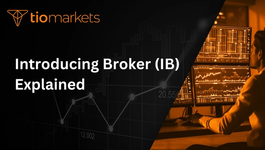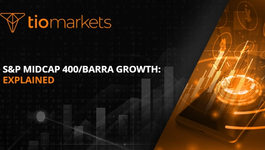Record date: Explained
BY TIOmarkets
|August 15, 2024The concept of the record date is a fundamental aspect of trading, particularly in the world of stocks and bonds. It is a specific date set by a company on which the company determines its shareholders or bondholders of record. These identified individuals or entities are then eligible to receive the company's next dividend or interest payment. Understanding the record date is crucial for traders and investors as it directly impacts their investment decisions and potential returns.
Despite its importance, the record date often remains a complex and misunderstood concept for many. This glossary entry aims to demystify the record date, providing a comprehensive understanding of its definition, significance, and impact on trading. We will delve into the intricate details of the record date, exploring its various aspects and implications in the world of trading.
Definition of Record Date
The record date, also known as the date of record, is a key date set by a company's board of directors. On this date, the company identifies its shareholders or bondholders who are eligible to receive the company's next dividend or interest payment. The record date usually precedes the ex-dividend date, another crucial date in trading.
It is important to note that the record date does not necessarily mean that the identified shareholders or bondholders will receive the dividend or interest payment on that date. Instead, it simply determines who is eligible to receive the payment. The actual payment date, known as the payable date, usually occurs after the record date.
Role of Record Date in Trading
The record date plays a significant role in trading as it directly influences investment decisions. Traders and investors often use the record date to plan their buying and selling strategies. For instance, if an investor wants to receive the next dividend payment, they must ensure that they own the company's shares before the ex-dividend date, which usually falls two business days before the record date.
Moreover, the record date also impacts the price of the company's shares. As the record date approaches, the demand for the company's shares often increases, leading to a rise in the share price. However, once the ex-dividend date passes, the share price typically decreases by approximately the amount of the dividend.
Understanding the Timeline: Declaration, Ex-Dividend, Record, and Payable Dates
Understanding the record date requires a grasp of the timeline involving the declaration date, ex-dividend date, record date, and payable date. These dates are integral to the dividend distribution process and directly impact trading decisions.
The declaration date is when a company's board of directors announces a dividend payment. The ex-dividend date is the first day when a buyer of a stock will not receive the declared dividend, as the seller of the stock will receive it instead. The record date, as mentioned earlier, is when the company identifies the shareholders eligible for the dividend. Finally, the payable date is when the dividend is actually paid to the shareholders of record.
Declaration Date
The declaration date is the first date in the dividend distribution timeline. On this date, a company's board of directors announces that the company will pay a dividend to its shareholders. The announcement includes details such as the amount of the dividend, the record date, and the payable date.
The declaration date is significant for traders and investors as it provides them with crucial information for their investment decisions. For instance, the announcement of a higher-than-expected dividend might lead to an increase in the company's share price.
Ex-Dividend Date
The ex-dividend date is the date on which the right to receive the next dividend payment is no longer attached to the company's shares. In other words, if you buy a company's shares on or after the ex-dividend date, you will not receive the next dividend payment. Instead, the seller of the shares will receive it.
The ex-dividend date is typically two business days before the record date. This is because of the T+2 settlement system, where 'T' stands for the transaction date and '+2' represents the two business days it takes for the transaction to settle. Therefore, if you want to receive the next dividend payment, you must ensure that you own the company's shares before the ex-dividend date.
Impact of Record Date on Share Price
The record date and the associated ex-dividend date can significantly impact a company's share price. As the record date approaches, the demand for the company's shares often increases as investors try to buy the shares to qualify for the dividend. This increased demand can lead to a rise in the share price.
However, once the ex-dividend date passes, the share price typically decreases by approximately the amount of the dividend. This is because the value of the dividend is no longer included in the price of the shares. Therefore, the record date can create short-term price volatility, which traders can potentially take advantage of.
Record Date and Price Volatility
The record date can create short-term price volatility in a company's shares. As the record date approaches, investors may rush to buy the shares to qualify for the dividend, leading to an increase in the share price. However, once the ex-dividend date passes, the share price usually decreases by the amount of the dividend, as the value of the dividend is no longer included in the price of the shares.
This price volatility can provide trading opportunities for traders. For instance, traders can potentially profit from the price increase before the ex-dividend date by buying the shares and then selling them when the price increases. Similarly, traders can potentially profit from the price decrease after the ex-dividend date by short-selling the shares and then buying them back when the price decreases.
Record Date and Dividend Reinvestment Plans
The record date also plays a crucial role in dividend reinvestment plans (DRIPs). A DRIP is a plan offered by a company that allows its shareholders to reinvest their cash dividends into additional shares or fractional shares of the company, often at a discount and without any brokerage fees.
For shareholders participating in a DRIP, the record date determines whether they will receive the next dividend in the form of cash or additional shares. If the shareholders are on the company's books as of the record date, they will receive the dividend in the form of additional shares. If not, they will receive the dividend in the form of cash.
Benefits of DRIPs
DRIPs offer several benefits to shareholders. First, they allow shareholders to accumulate more shares without any brokerage fees. This can be particularly beneficial for small investors who may not have sufficient funds to buy additional shares through a broker.
Second, DRIPs allow shareholders to take advantage of dollar-cost averaging. By reinvesting their dividends into additional shares, shareholders can buy more shares when the share price is low and fewer shares when the share price is high. This can potentially lower the average cost per share over time.
Conclusion
The record date is a crucial concept in trading, particularly in the world of stocks and bonds. It determines who is eligible to receive a company's next dividend or interest payment, influencing investment decisions and share prices. Understanding the record date and its implications can help traders and investors make more informed investment decisions and potentially enhance their returns.
Whether you are a seasoned trader or a novice investor, understanding the intricacies of the record date is crucial. It not only helps you plan your buying and selling strategies but also enables you to take advantage of short-term price volatility and dividend reinvestment opportunities. So, delve into the details of the record date, understand its implications, and leverage it to your advantage in the world of trading.
Start Trading with TIOmarkets
Now that you're equipped with the knowledge of record dates and their significance in the trading world, it's time to put that understanding into action. Join TIOmarkets, the top-rated forex broker, and access a platform where you can trade over 300 instruments across 5 markets, including Forex, indices, stocks, commodities, and futures. Benefit from low fees and a wealth of educational resources to further your trading skills. With over 170,000 accounts opened in more than 170 countries, TIOmarkets is your gateway to effective trading. Ready to dive into the market? Create a Trading Account today and start your journey towards successful investing.

Risk disclaimer: CFDs are complex instruments and come with a high risk of losing money rapidly due to leverage. You should consider whether you understand how CFDs work and whether you can afford to take the high risk of losing your money. Never deposit more than you are prepared to lose. Professional client’s losses can exceed their deposit. Please see our risk warning policy and seek independent professional advice if you do not fully understand. This information is not directed or intended for distribution to or use by residents of certain countries/jurisdictions including, but not limited to, USA & OFAC. The Company holds the right to alter the aforementioned list of countries at its own discretion.
Join us on social media

Behind every blog post lies the combined experience of the people working at TIOmarkets. We are a team of dedicated industry professionals and financial markets enthusiasts committed to providing you with trading education and financial markets commentary. Our goal is to help empower you with the knowledge you need to trade in the markets effectively.





